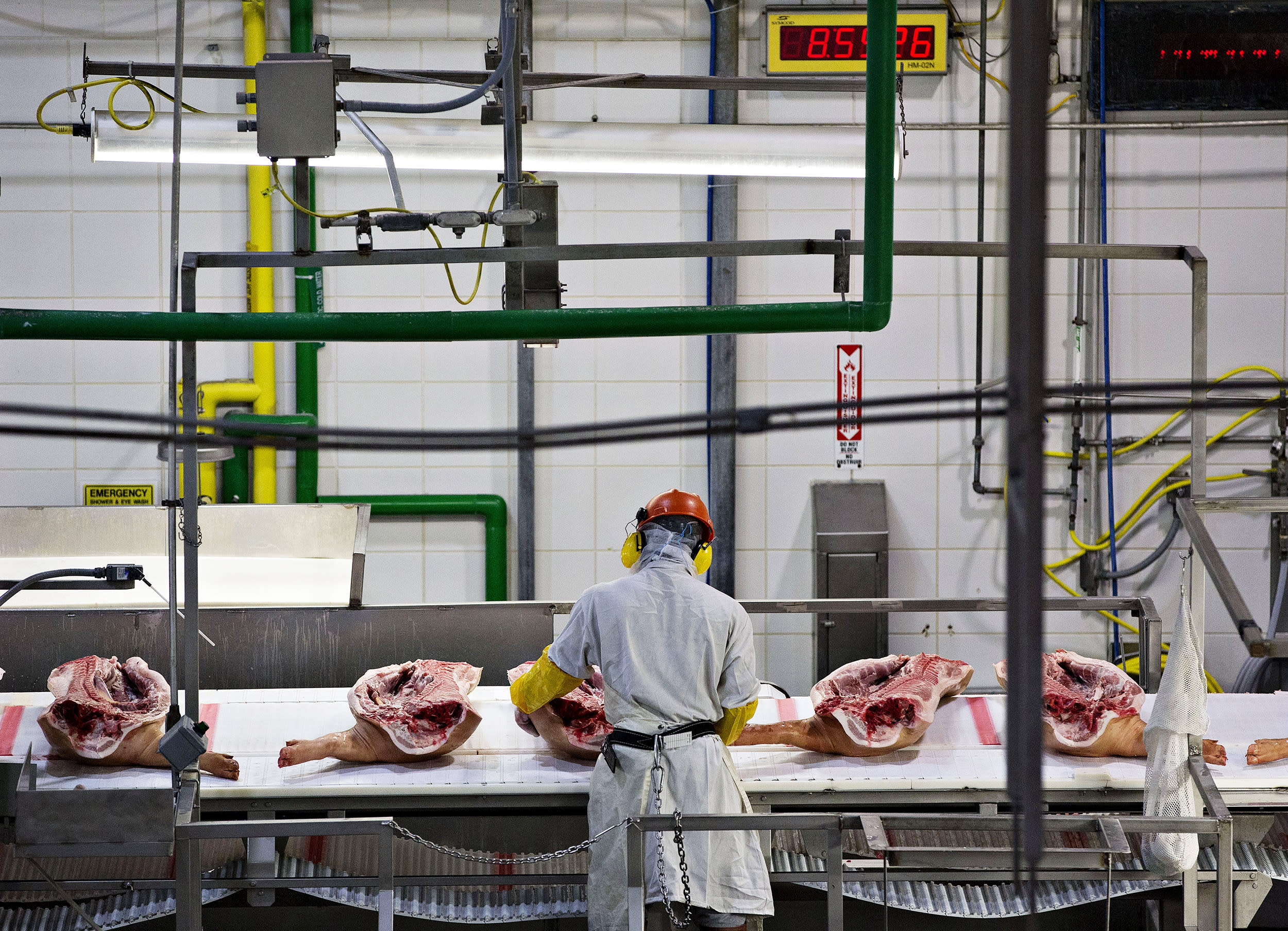New Swine Inspection System

New Swine Inspection System

Policy Position Statement #1
The Situation: The Washington Post, members of Congress and thirty-five other organizations, including Compassion Over Killing, Friends of the Earth and Waterkeeper Alliance[1], have raised concerns about a proposed modernization of the food safety and inspection process by the U.S. Department of Agriculture’s (USDA) Food Safety and Inspection Service (FSIS) called the New Swine Inspection System (NSIS). The Washington Post article claimed the “Pork industry soon will have more power over meat inspections” Congress has threated to withhold appropriations because of increased line speeds as a result of implementing the NSIS.
NAFV’s Position:
NAFV supports the FSIS proposed New Swine Inspection System (NSIS). NAFV’s members constitute the nation’s largest block of scientific and technical expertise in the area of food safety and slaughter inspection and have determined the new system will enable a more scientific basis for ensuring food safety for the public.
Background:
On January 19, 2018 FSIS announced its continued effort to modernize inspection systems through science-based approaches to food safety. USDA has proposed to amend the federal meat inspection regulations to establish a new voluntary inspection system for market hog slaughter establishments called the New Swine Inspection System (NSIS), while also requiring additional pathogen sampling for all swine slaughter establishments[2].
The NSIS places more emphasis on the critical control points for contamination and uses microbiological testing in addition to visual inspection to ensure slaughter processes are producing safe foods. The new system does not relinquish any “power” to slaughter plants, FSIS will have all the same authorities to enforce food safety standards as before. The NSIS is a major step forward in improving the slaughter inspection systems of the US to provide safe food to the public. Increased line speeds and the impact on plant employees will be monitored by the Department of Labor’s Occupational Safety and Health Administration (OSHA) which has that jurisdiction. Line speed are set and adjusted for optimal efficient food safety inspection and worker safety precautions. FSIS sets the cap based on industry standards and outcome of inspections.
April 8, 2019, FSIS released a response to the article, condemning it for false reporting. Specifically, FSIS clarified that only federal inspectors perform meat inspections and will continue to conduct 100% ante-mortem inspections and 100% carcass-by-carcass inspection at post-mortem. The agency will make staff determinations on a case-by-case basis and will not be decreasing inspectors by 40 percent. Under the proposal, establishment employees sort market hogs before FSIS inspection, which is consistent with current policy for establishments under traditional inspection.
NAFV reasoning for its position:
In our opinion most FSIS veterinarians feel that the new swine inspection system (NSIS) is an important step forward in creating inspection systems that have a stronger focus on food safety. These Supervisory Public Health Veterinarian (SPHV) are working on the front line supervising lay FSIS inspectors to ensure the meat and meat products are safe and wholesome. They feel that when FSIS requiring greater responsibility from the facility under NSIS, it does not delegate any authority to the facility. That is because the FSIS SPHV is still present and in charge and FSIS continues to exercise its full authority over the inspection process.
To understand inspection, it is useful to know there are two basic parts: ante-mortem (before death) and post-mortem (after death) and the effects of this new system compared to the current system.
Ante-mortem Under the NSIS, facility sorters remove sick animals before inspection by FSIS but FSIS SPHV’s will still inspect those animals for evidence of foreign animal diseases and other diseases. This issue is critical from an animal disease surveillance perspective since the slaughter facilities are concentration points for the national swine herd. It is an ideal location for detection of foreign animal diseases like Foot and Mouth Disease or African Swine Fever. NAFV recommends that in the final rule, the FSIS veterinarian be required to examine all animals sorted out by the facility.
Post-mortem
Under the new system, the slaughter facility employees, called sorters, remove unsafe or unwholesome carcasses before inspection by FSIS. Every carcass is then inspected by FSIS at three locations- heads, viscera, and final carcass on the rail, before it is passed. The FSIS inspector/SPHV retains full authority to retain carcasses for veterinary dispositions, which is a more detailed inspection of any carcass part. This allows FSIS personnel to spend more time on food safety duties such as monitoring implementation of facility food safety plans, and operational sanitation at every location within the facility.
The slaughter facility is held responsible by FSIS to control its process to produce safe and wholesome products, and FSIS retains all authority to ensure a facility performs its responsibilities under the NSIS.
One of the biggest concerns of those not familiar with the inspection process is the line speed. If the line speed is too fast, then observation of the carcasses is hampered. However, line speed is a function of process control which is part of the overall inspection process that FSIS retains authority over. FSIS determines that each facility is maintaining proper control of its process including the line speed in each facility. The facility can only use a line speed that allows adequate inspection. Another concern is that this new system will decrease the number of FSIS SPHVs and inspectors in the facilities. FSIS will not be decreasing the workforce; they will just use the current workforce in a more efficient manner to conduct more inspections of the other slaughter processes within the facility. This allows an increased focus on food safety and is more efficient as the facility is sorting carcasses before inspection by FSIS personnel.
To further explain the food safety benefit of NSIS, the SPHV can focus more on conducting good IPPS reviews, training, supervision, communicating with the establishment, etc. instead of spending hours a day giving breaks. In addition, the FSIS inspectors will be upgraded and receive more training. Because the SPHV has more time to focus on public health, this should in turn result in improved food safety. The best way to measure this is to compare microbiological sampling data between different types of facilities. NAFV veterinary members who have worked in these types of systems tell us that facilities condemn many more carcasses than FSIS for non-food safety related pathology.
Those individuals who oppose the NSIS say it violates existing laws and regulations. NAFV is not aware of any laws that are being broken under NSIS because FSIS retains authority over the inspection process. NAFV is aware that FSIS conducted a cost benefit analysis of NSIS but have not seen this analysis so cannot comment on it. Another criticism of NSIS is that the facility employees do not have the training needed to detect unsafe or unwholesome carcasses. NAFV feels this is a valid concern and a requirement the facility must meet before being approved for NSIS.
[1] https://www.farmprogress.com/usda/comment-new-swine-slaughter-inspection-system-through-april-2
